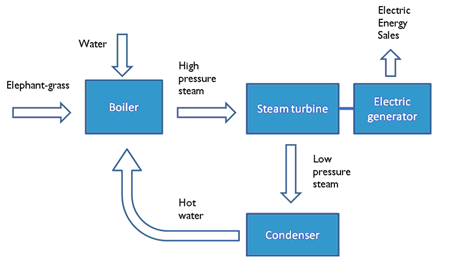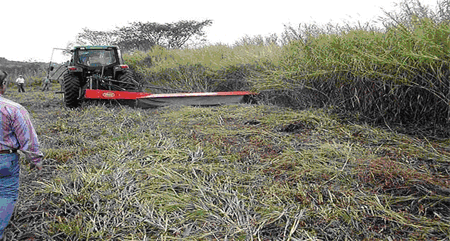Renewable Power Projects Using Elephant Grass
| 12.19.08 | Rafael Herzberg, Partner, Interact Ltd., Energy Consulting |
Despite the world's financial and economic crisis, electric energy
consumption in Brazil is growing at 5% a year. The current installed
generating capacity is 101 GW. Since supply and demand are balanced these
days, it means that the required expansion is 5 GW/year just to make sure
the market is supplied in the years to come. However, the approved, licensed
and under construction power plants add up to 4 GW/year. There is a 1 GW/year
deficit.
This scenario stimulated the Federal Government to offer special stimulus
for renewable, up to 30 MW projects. The official development bank – BNDES -
offers special credit lines for such projects, and mainly the end users who
contract energy out of these projects get a 50% discount on the wire fees
(related to demand charges).
There is a list of renewable projects that fit in very well here in Brazil.
The sugar mils took the lead and are now cogenerating energy as much as they
possibly can, by burning excess sugar cane bagasse to produce and sell
electricity through the public grid. Elephant grass might be a very
interesting option too:
* The power plants are the same ones that are already and extensively used
to burn other biomasses such as wood chips and sugar cane bagasse;

The elephant grass grows very quickly as compared to other biomasses (2 to 4 harvests per year), it is resistant to drought and disease;


* It is neutral in terms of emissions;
* It may be built and start operations in less than 2 years.
A 30 MW power plant requires about 5 000 hectare of elephant grass to
produce firm energy throughout the year. Since this is a considerable land
size, only remote areas are good candidates for such farms. Therefore,
special attention is needed when it comes to selecting the location. The
closer to the public grid, the better in order to reduce transmission line
investments. The good news is that there are states in the country that fit
very well these requirements.
Elephant grass power plants may be of special interest to independent power
producers and to end users such as industrial, commercial and institutional
to "self-produce" energy. The regulations are very well prepared in Brazil
to accommodate such projects. There is an established electricity spot
market which may be used to balance the power plant's production versus
contracted volumes.
The elephant grass power plant makes sense for the investors and for the
client.
Energy is being sold at R$ 180/MWh (1 USD = 2.3 R$ as of November 08) in the
deregulated energy markets in Brazil.
A potential client for this energy will receive a 50% discount on the wire
fees. The following calculations show the final price as seen by a 13 kV
industrial energy user. Typically the wire fees are:
On-peak demand: R$ 33/kW
Off-peak demand: R$ 8/kW
Assuming an industrial client with a 24 x 7 operation and a 80% load factor
the wire fees as referred in terms of R$/MWh may be calculated:
Total demand cost: R$ 41/kW
Number of hours per month: 720 h
Equivalent demand cost: 41/(720 x 80%) = 0,071 R$/kWh = 71 R$/MWh
The 50% discount represents therefore R$ 35/MWh.
Energy billed by the plant is R$ 180/MWh. The end user will see it as R$
180/MWh – R$ 35/MWh = R$ 145/MWh.
The most important challenges associated with a project like this are:
* Find a competitive 5 000 hectare land close to a public grid. There are
states very conveniently located in the central and or southeaster states
which might fit this "job description";
* Contract the turn key package (thermal power plant) from world class
providers. There are very well established companies with decades of
tradition in the sugar mill industry;
* Develop a long term energy contract with a client (or clients) so as to
facilitate access to official loans (especially from the BNDES) which offer
special terms and conditions for such projects;
* Contract elephant grass from a local producer or develop its production
on-site so as not depend on third parties;
* Contract back up power before the local utility company. If the power
plant for any reason is not able to produce energy the final client will not
be affected at all;
* Develop a strategy to take advantage of the spot markets. In Brazil where
75% of the electric energy is produced out of hydro power plants, the rainy
and dry season have a major influence in the spot prices. Combining the
thermal power plant with these seasonal variations will only but increase
internal rate of returns!
![]()
Copyright © 2002-2006, CyberTech, Inc. - All rights reserved.